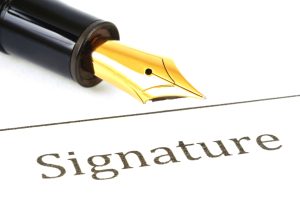How Speeding Can Diminish Your Cape Coral Car Accident Claim
 Excessive speed is a factor in approximately one-third of all fatal crashes, according to the NHTSA. As Cape Coral car accident lawyers, we’ve seen far too many cases where rushed drivers recklessly put others’ lives at risk just so they could get to where they’re going a bit sooner.
Excessive speed is a factor in approximately one-third of all fatal crashes, according to the NHTSA. As Cape Coral car accident lawyers, we’ve seen far too many cases where rushed drivers recklessly put others’ lives at risk just so they could get to where they’re going a bit sooner.
Most drivers recognize speeding as risky, according to a recent AAA survey, and yet more than 50 percent admit driving 15 mph or more over the designated limit on the freeway at least once in the last 30 days.
What many people don’t realize is that even if they’re careful and attentive while sneaking past that speed limit, such violations have the potential to significantly curb the amount of financial compensation they can collect if they’re injured in a Cape Coral car accident – even if they weren’t the primary cause of it. This is especially true given the recently-passed state legislation introducing modified comparative negligence rules, limiting the right to any compensation whatsoever to drivers deemed more than 50 percent at-fault for a crash. (It used to be that a driver who was 99 percent liable could still collect on the other 1 percent in damages from the other at-fault driver, though obviously such a disparity wouldn’t be a desirable outcome.) Speeding can be considered in determining comparative fault behind the wheel.
What is Comparative Fault?
Comparative fault is defined in Florida Statute 768.81. It’s the recognition that there can be multiple factors that contribute to an injurious accident, and that each party should only have to pay their fair share.
As our Cape Coral car accident lawyers can explain, it’s the contributory fault of the plaintiff in a negligence action that proportionately diminishes the amount of money (economic and non-economic damages) one can collect for an injury. While it proportionately reduces the amount a person can collect, contributory fault won’t entirely bar recovery of damages – so long as their share doesn’t exceed half.
Every state has their own rules about contributory fault standards. Some hold that if you are even 1 percent responsible for the crash, you walk home with $0. Others set the cutoff bar at somewhere between 49 and 50 percent. Florida was one of the few pure comparative fault states that had no bar for recovery. That changed this spring with a slew of state tort reform measures.
Comparative fault is sometimes referred to as “the claim killer” because if proven, it can erode the monetary value of your case. An experienced personal injury lawyer can work to push back against comparative fault claims – but clear evidence of speeding is unquestionably going to count against any plaintiff in such an analysis. You may not have made the wrong left turn, but if you were going 15mph over the speed limit, the severity of the crash was likely amplified – and that factors into the comparative fault analysis. Continue reading





 Florida Personal Injury Lawyer Blog
Florida Personal Injury Lawyer Blog



 For a teenager, that first set of car keys feels like freedom – at last! Parents, of course, usually have a different perspective. There’s often a great deal of apprehension around those first few driving years. Unfortunately, those concerns are well-founded, as the risk of Fort Myers teen car accidents is especially high for new drivers.
For a teenager, that first set of car keys feels like freedom – at last! Parents, of course, usually have a different perspective. There’s often a great deal of apprehension around those first few driving years. Unfortunately, those concerns are well-founded, as the risk of Fort Myers teen car accidents is especially high for new drivers. Car fires aren’t anywhere near as common as they used to be a few decades ago. However, as a Fort Myers crash lawyer, I’ve seen more than a few lead to serious injuries.
Car fires aren’t anywhere near as common as they used to be a few decades ago. However, as a Fort Myers crash lawyer, I’ve seen more than a few lead to serious injuries.
 We all know red-lighting running is unequivocally illegal – not to mention incredibly dangerous. But what about Florida yellow light car accidents?
We all know red-lighting running is unequivocally illegal – not to mention incredibly dangerous. But what about Florida yellow light car accidents? There are a number of situations where employers in Florida can be held legally responsible for the damage caused by negligent employees – even if the employer didn’t directly cause the damage. This is what is referred to in civil injury law under the concepts of “vicarious liability” and “respondeat superior”. Essentially, it’s an imputed liability for the actions of a subordinate third party, typically an employee or
There are a number of situations where employers in Florida can be held legally responsible for the damage caused by negligent employees – even if the employer didn’t directly cause the damage. This is what is referred to in civil injury law under the concepts of “vicarious liability” and “respondeat superior”. Essentially, it’s an imputed liability for the actions of a subordinate third party, typically an employee or  The plan was a sun-soaked, fun-filled getaway in sublime Southwest Florida. What happened was a Florida car accident. As longtime Fort Myers personal injury lawyers, we recognize there are unique concerns when visitors and vacationers from out-of-town are involved in a Florida crash. There are logistical challenges, often higher expenses, insurance questions, and uncertainty as to the full scope of your rights.
The plan was a sun-soaked, fun-filled getaway in sublime Southwest Florida. What happened was a Florida car accident. As longtime Fort Myers personal injury lawyers, we recognize there are unique concerns when visitors and vacationers from out-of-town are involved in a Florida crash. There are logistical challenges, often higher expenses, insurance questions, and uncertainty as to the full scope of your rights. Yes, a past injury or illness can absolutely impact a Florida personal injury claim. As our Naples car accident lawyer can explain, a preexisting condition complicates the claims process because the burden is on the plaintiff to prove the injury at issue was either caused or aggravated by the negligent act.
Yes, a past injury or illness can absolutely impact a Florida personal injury claim. As our Naples car accident lawyer can explain, a preexisting condition complicates the claims process because the burden is on the plaintiff to prove the injury at issue was either caused or aggravated by the negligent act. It’s completely understandable – smart, actually – to be wary of signing any sort of a Florida personal injury settlement release form following a car accident. As our
It’s completely understandable – smart, actually – to be wary of signing any sort of a Florida personal injury settlement release form following a car accident. As our  Securing an insurance payout while recovering from Florida bicycle accident injuries isn’t always a simple matter.
Securing an insurance payout while recovering from Florida bicycle accident injuries isn’t always a simple matter.






